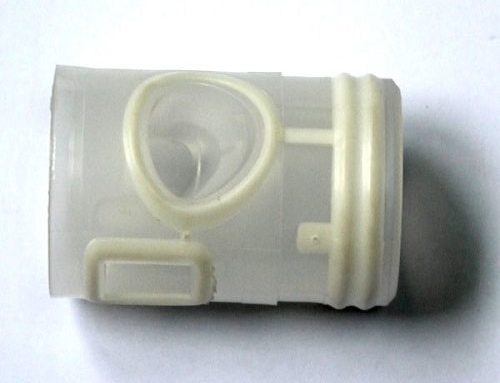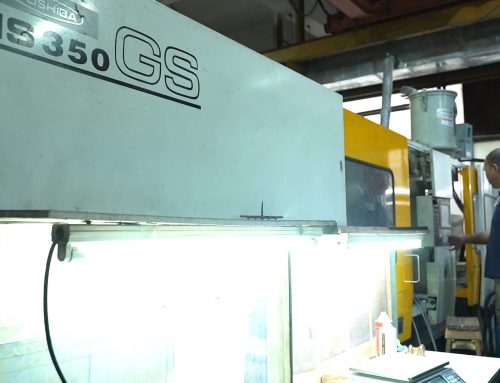Plastic materials commonly used in plastic moulding dies are: ABS, AS, PC, PS, PP, PVC, etc. There are usually several requirements for commonly used plastic moulding dies materials:
First, good polishing performance
Plastic moulding dies materials usually require good gloss and surface condition, so surface roughness of cavity is required to be very small, surface of cavity must be surface-processed, such as polishing, grinding. Therefore, selected steel should not contain rough impurities and pores.
Second, small impact of heat treatment
In order to improve hardness and wear resistance, plastic die casting is generally subjected to heat treatment, but this treatment should have a small dimensional change. Therefore, it is preferable to use a pre-hardenable steel that can be machined.
Third, good wear resistance
Gloss and precision of surface of plastic die casting material are directly related to wear resistance of cavity surface of plastic moulding dies. Especially when some plastics are added with glass fiber, inorganic filler and some pigments, they are together with plastic melt. Idle flow in flow channel and the cavity is very large, and friction on the surface of cavity is very large. If material is not wear-resistant, it will wear quickly, and quality of plastic part is damaged.
Fourth, high corrosion resistance
Many resins and additives have corrosive effects on surface of cavity. This corrosion causes surface of cavity to corrode, peel off, surface condition deteriorates, and quality of molded part deteriorates. Therefore, it is best to use corrosion-resistant steel or chrome and nickel-plated surface of cavity.
Five, good dimensional stability
On plastic moulding dies, temperature of die for plastic moulding cavity should reach 300 ° C or higher. For this reason, it is preferable to use a suitably tempered tool steel (heat treated steel). Otherwise, it will cause a change in the microstructure of material, resulting in a change in the size of plastic moulding dies.
Six, easy to process
Parts of die for plastic moulding are mostly made of metal materials, and some of structural shapes are still complicated. In order to shorter production cycle and improve efficiency, plastic moulding dies material is required to be easily processed into shape and precision required by drawings.
Shape of parts of plastic moulding dies is often complicated, and it is difficult to process after quenching. Therefore, materials with good thermal stability should be used as much as possible.
Injection mold materials can also be divided into soft molds and hard molds.
Soft mold is generally made of P-20 pre-hardened steel, and some of backward places are made of carbon steel of No. 45 or above, and production capacity is generally about 500,000 times;
Hard mold is made of hot-worked steel such as H-13 (chrome steel) or 420 (stainless steel). Heat treatment process requires more than double cost of materials and processing, and production capacity is more than one million times.
Steel surface treatment
Surface treatment of mold steel is also very important. Nitriding can enhance surface hardness of steel and effectively extend life of plastic moulding dies. Electroplating can effectively modify mold steel. For some high-brightness and corrosion-resistant plastic parts, it can be strengthened by electroplating to improve performance of steel.
Structural plastic die design
Mature mold structure not only considers product material properties, shrinkage rate, molding temperature, elastic tensile deformation coefficient, but also considers cooling water passage, speed of opening and closing mold. Reasonable mold structure can effectively extend life of mold, ensure smooth production of mold, and improve efficiency and reduce costs.
Mold processing
Arrangement of plastic moulding dies technology is particularly important. Reasonable process arrangement can speed up production cycle, shorten processing time and save costs. And more importantly, accurate and reasonable processing can ensure stability and longevity of mold during production process. Some machining errors will lead to mold welding, no matter how good welding is, it is a loss to die for plastic moulding; in addition, poor processing may affect mold movement, reduce life of mold, and cause plastic moulding dies to cracked or even broken in production process.
Mold accessories
Although standard parts of mold parts are not directly involved in molding, they control operation of the whole plastic moulding dies. Standard parts with excellent quality should have characteristics of being wear-resistant, hard enough, high precision and unsuitable for deformation.
Flying mode or collision
Collision relies mainly on experience of mold fitters, but simple work is the most technical work. The main thing that looks at complex molds is this effort. Flat mold is the simplest, and fractal surface is basically as long as there is no flash break. It is very troublesome for a car accessory mold. Not only is fractal surface relatively irregular, but it often includes multiple sliders and top blocks. At the same time, through collision, other problems of plastic die casting can be improved and improved. So it is a comprehensive job.
Polish or grain
Polishing of plastic moulding dies is the last step in the manufacture of plastic die casting. Polishing is directly reflected on plastic parts, so this is the most face-to-face job. Polishing also helps and complements mold movement, especially for demolding. Often some plastic moulding dies are not produced smoothly because lighting is not in place, resistance is too large, demoulding is difficult, and even whitening and cracking are caused.
Mold assembly
Mold assembly is like assembling a machine. Every component and every screw can’t go wrong. Otherwise, consequences will be quite serious. Lightness will lead to product defects, affect production, completely damage mold and cause scrapping. Therefore, assembly work must be very careful. In assembly process, especially pay attention to cleaning work of plastic moulding dies, especially waterway and screw holes. Be sure to blow off iron filings inside, otherwise customer will be very angry.
Mold hot runner system
This actually has the least impact on quality of plastic moulding dies, because hot runners are generally branded by customers, especially some big customers. Well-known foreign brands do a good job in quality and after-sales service, so there is generally no problem in quality. However, some domestic hot runners have a very different quality. In order to save costs, individual small enterprises strive for price advantages, and with some unreliable heating and conduction accessories, problems are easy to occur. Main problem with cold runners is how to ensure balance of plastic moulding dies, gate size, injection pressure and so on.
Cooling waterway
Anyone with experience in mold knows how important cooling is to a mold. Due to increase in prices and labor wages, it is unthinkable to reduce profit from one-second injection cycle when mass-produced products. However, when production cycle is accelerated, temperature of mold will rise. If it is not effectively controlled, mold will be too hot to be formed, and even mold deformation will be scrapped. Therefore, excellent waterway design is particularly important, including arrangement density, diameter, and links between waterways.




